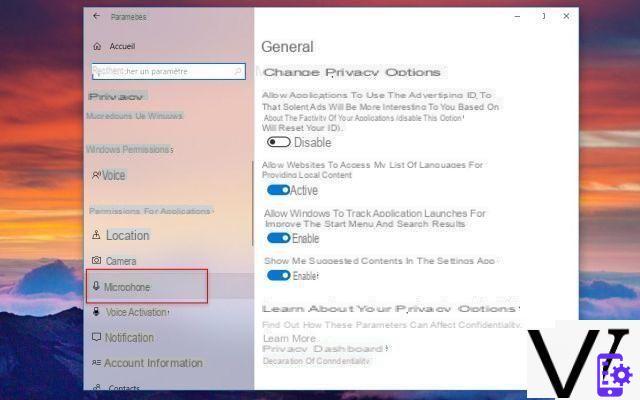
Switching from Mirrorless to Camcorder is certainly an uncommon and not so widespread situation as they are two distinct products made for extremely different needs. Sometimes, however, a camera (not necessarily Mirrorless) is not enough, which is why it is necessary, at least for video needs, to switch to something different. Here is my German experience with Panasonic HC-X1, a broadcast camcorder that helped me optimize shooting during IFA 2019.
From Mirrorless to Camcorder: Why Panasonic HC-X1
As many of you know, I was "born" (artistically speaking) with photography to then get closer and closer to video and eventually divide myself between the two professions. This is because, working between events, fairs, reviews and more, I began to have the need to better manage my work and professional needs. For this reason, thanks to Panasonic, I was able to try Panasonic HC-X1, a professional camera dedicated to broadcast and which served me not only to give a more professional look to the final product but also to be able to better manage some aspects in the production phase (such as audio, for example).
But let's take a step back: what is a Camcorder? Why did I choose the Panasonic HC-X1?
At the beginning of this "adventure" I felt completely inexperienced about the part dedicated to professional videos; this is because I have always made videos with reflex / mirrorless, thus having some advantages and some disadvantages. The advantages of making videos with a mirrorless are certainly dedicated to the ease of transport and the low weight, which is not always available in a camcorder. Among the disadvantages, however, we must point out the impossibility, making an average, to record clips over 30 minutes (which in reality could be useful if you have to manage particular events). This is mainly because a camera sensor (even full frame) would become excessively hot after 30 minutes of recording and this could lead to a number of particularly serious problems. In addition to this, in most cases the cameras have a comfortable grip for photography but uncomfortable for video, which is why you buy Joysticks, various handle grips and above all gimbals.
It is precisely in the disadvantages of a mirrorless that there is a pleasant response in the use of a Camcorder, all these problems are not there as it is a device designed for video. As I wrote just above, you need to understand and understand your needs in the best possible way and evaluate every production possibility. If you are interested exclusively in photography or recording a few video clips here and there it is quite logical that your purchase choice will not fall on a Camcorder.. Otherwise, if you have specific needs on the video side, especially when it comes to transmission, live streaming or event management that require long recording times and more than one microphone connected to the recording device, then it is right to approach more professional cameras.
Panasonic HC-X1 is a product of the "Camcorder Broadcast" range, that is, a device that gives its best when used for streaming, very long-lasting live recordings, interviews and the like. However, Panasonic also produces cameras of the “Cine” series, which are suitable for recording feature films and / or commercials. I chose to bring the IFA HC-X1 with me mainly for the convenience of transport and the double XLR port to be able to handle two input microphones (but more on that later).
The first rule what you should know if you want to make this kind of transition from Mirrorless to Camcorder is certainly the fact that there are some tricks that change completely and that should be mastered before jumping into recording for business purposes. For example, it would be advisable to calibrate the white balance at each change of scenery, even if many products (including this one) integrate a rather reliable automatic calibration system. This does not mean that giving a pure white point for calibration will certainly not make it suffer, on the contrary, it will help a process that will improve over time. Another point of difference is certainly the layout of the keys and the type of movement within the various sections: at first you will feel like you are inside a maze and you will panic. Don't worry, it is absolutely normal and it is due to the habit of using a Mirrorless, after a short time you will get used to it and you will be able to manage the device quickly. It took me very little to get to grips with the Panasonic HC-X1, and it was all part of the test. In fact, the idea was not at all to review this product by testing the video quality, the more to understand its handling and practicality in a dynamic situation such as an international technology fair (and not only).
The very first time I opened the Panasonic HC-X1 box I immediately thought they forgot to send me the camera and only sent me the box as the product is mammoth (positively speaking) but extremely light. To prove this statement is the game "try to lift it" that I played with all the friends and colleagues who passed by my studio: once they saw the power of the product, everyone, without distinction, "loaded" their arm to get prepared for the hypothetical weight of the product, to then remain almost bad from the overall lightness. There are those who asked me if the camera was fake, empty inside or a simple demonstration model (mockup). Panasonic HC-X1 weighs exactly 2kg but measures 173 x 195 x 346 mm, so a decidedly different size-to-weight ratio is expected.
Among other features we find a goal LEICA DICOMAR 4K with 24mm wide angle, 20x optical zoom and a brightness from f / 2.8 to f / 4.5. The focal range allows, compared to a 35mm sensor, to get to have one optical zoom up to 508mm (20x, as written a little while ago), a feature that, together with the "Macro Focus" function, allows you to create interesting close-ups with excellent blur, all via a convenient slider that electronically manages the zoom or, if you prefer, via a ring that performs the same operation but with a different and more photographic feeling. The sensor is one inch but is capable of recording in 4K @ 24p, 4K UHD up to 60p or FHS at 60p. The triple manual dials on the optics are pleasant, one of them for zoom management but, above all, the presence (as per segment) of a double XLR audio input is excellent.
For the uninitiated, the XLR connector allows for better audio quality and, the devices that integrate this connector, usually have a controller dedicated to audio management, a feature that allows an input with a better frequency in Hz (usually around 96Hz) and therefore a better and professional result. However, this does not happen in mirrorless or reflex cameras: given the limited space, the quality of the audio controller is always rather low, resulting in a final audio not so clean and in high definition. This is why the audio is often managed by an external recorder (for those who have a mirrorless or a reflex camera), a problem that is instead solved directly in the camera with a broadcast or cine product such as the Panasonic HC-X1.
From Mirrorless to Camcorder: the experience at the fair
Using Panasonic HC-X1 at IFA 2019 was definitely fun, above all because the construction of a "real camera" also allows more types of grip, useful to satisfy every possible need in the video field (for this segment, of course). This allowed me to hold the camera in "handy cam", Ie laterally with the band on the hand, during previews, interviews and the like, otherwise, for the creation of contributions and / or covers, I preferred the superior grip as a"cage”Typical of Small Rig. This handle positioned in the upper part has a comfortable sleeve to make contributions or even "only" for an easier and more comfortable transport, but it does not end there: always in the same position, there are three screw connections of different sizes to allow you to connect monitors outdoor, shogun, various receivers, general accessories and so on. In short, as rightly often happens in this area, the product is a "base" to which you can then connect various accessories to expand your workflow and better manage your work.
The battery in the Panasonic HC-X1 is 5.900mAh, sufficient to guarantee a good autonomy at the fair, even if it is advisable to buy another one. The charger takes about 2 hours to fully charge the battery, so you should consider getting the necessary charge according to your needs. Otherwise, for fixed use you can also consider using a classic and standard AC power supply to have continuous power and no problem with regard to batteries. These cameras are already set up for this type of use, therefore, in fact, there is no type of risk or concern that instead there could be in doing the same operations with a mirrorless (again for the issue of overheating). Here because switching from Mirrorless to Camcorder may be necessary in some cases, even if it is a type of operation necessarily commensurate with the type of work in progress.
Panasonic HC-X1 remains an excellent entry level in the world of camcorders and available at a decidedly low price compared to the actual quality, lightness and ease of use. Therefore, if you are looking for your first camcorder, you may have found it.
[

























